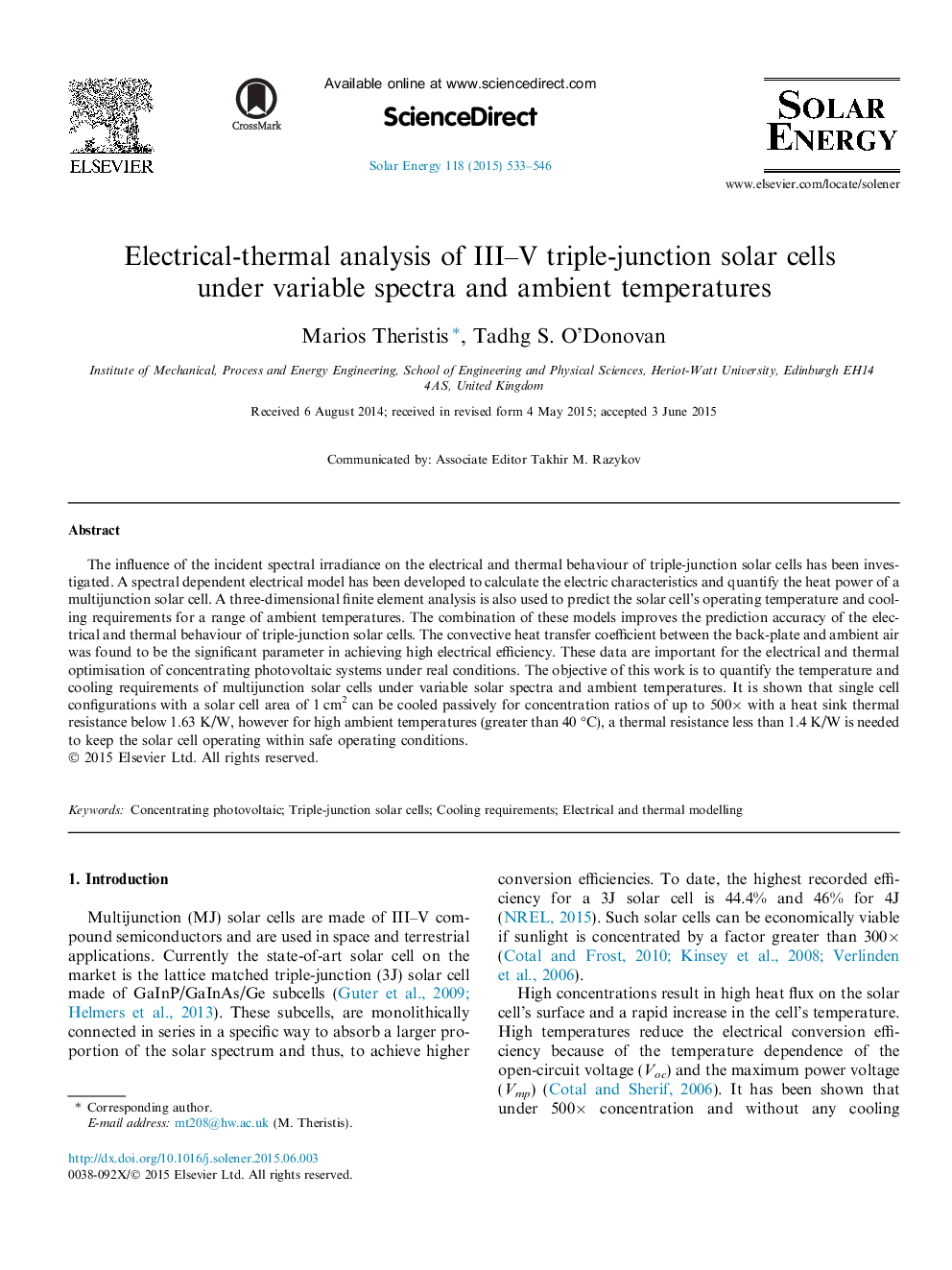| Article ID | Journal | Published Year | Pages | File Type |
|---|---|---|---|---|
| 7937786 | Solar Energy | 2015 | 14 Pages |
Abstract
The influence of the incident spectral irradiance on the electrical and thermal behaviour of triple-junction solar cells has been investigated. A spectral dependent electrical model has been developed to calculate the electric characteristics and quantify the heat power of a multijunction solar cell. A three-dimensional finite element analysis is also used to predict the solar cell's operating temperature and cooling requirements for a range of ambient temperatures. The combination of these models improves the prediction accuracy of the electrical and thermal behaviour of triple-junction solar cells. The convective heat transfer coefficient between the back-plate and ambient air was found to be the significant parameter in achieving high electrical efficiency. These data are important for the electrical and thermal optimisation of concentrating photovoltaic systems under real conditions. The objective of this work is to quantify the temperature and cooling requirements of multijunction solar cells under variable solar spectra and ambient temperatures. It is shown that single cell configurations with a solar cell area of 1 cm2 can be cooled passively for concentration ratios of up to 500à with a heat sink thermal resistance below 1.63 K/W, however for high ambient temperatures (greater than 40 °C), a thermal resistance less than 1.4 K/W is needed to keep the solar cell operating within safe operating conditions.
Related Topics
Physical Sciences and Engineering
Energy
Renewable Energy, Sustainability and the Environment
Authors
Marios Theristis, Tadhg S. O'Donovan,
